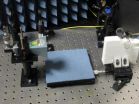(Press-News.org) (WASHINGTON, June 17, 2014) – New research, published online today in Blood, the Journal of the American Society of Hematology, suggests that the diversity of bacteria in the gastrointestinal tract of patients receiving stem cell transplants may be an important predictor of their post-transplant survival.
A healthy gastrointestinal tract contains a balanced community of microorganisms (known as microbiota), largely comprised of "friendly" bacteria that aid digestion and are important to immune system function. When this community of microbes is compromised, the microbiota may become less diverse, and the body becomes more susceptible to certain diseases.
Previous studies have shown that the intensive treatment given to individuals receiving a stem cell transplant from a healthy donor (known as an allogeneic stem cell transplant or SCT) can destroy a significant portion of the recipients' gut microbiota and reduce its overall diversity. Disturbances of the gut microbiota have been shown to be correlated with post-transplant complications such as bloodstream infections and graft-versus-host disease.
"While the link between gut microbiota and complications in allogeneic SCT has been previously established, until this point it has remained unclear whether the gut bacteria of transplant recipients could predict their survival," said senior study author Ying Taur, MD, MPH, of the Lucille Castori Center for Microbes, Inflammation, and Cancer at Memorial Sloan Kettering Cancer Center. "This study sought to further explore the potential connection between transplantation, gut bacteria, and overall survival."
To better understand the association between post-transplant microbiota and patient outcomes, Dr. Taur and a team of researchers collected fecal specimens from 80 patients undergoing allogeneic SCT and sequenced each sample's bacterial DNA. Specimens were collected within seven days of engraftment, the point at which transplanted blood-forming cells start to grow and make healthy cells in the recipient and the point at which researchers speculated that microbiota diversity would be greatest following pre-transplant conditioning.
Researchers compared patient outcomes based on diversity of microbiota in their specimens, grouping subjects into high, intermediate, and low microbiota diversity categories. At time of stem cell engraftment, 34 patients (42.5%) were observed to have low gut microbiota diversity, 20 (25%) of patients had intermediate diversity, and 26 (32.5%) patients had high diversity. The analysis continued for up to three years or until death or last follow-up.
Following their analyses, researchers found a strong connection between post-transplant gut microbiota diversity and outcomes, observing overall survival rates of 36 percent, 60 percent, and 67 percent among the low, intermediate, and high diversity groups, respectively. Furthermore, researchers observed that diversity was particularly associated with transplant-related outcomes, concluding that patients with low microbiota diversity were approximately five times more likely to die of transplant-related causes within the follow-up period than those with more diverse gut bacteria.
"These results further underscore the significance of the gut microbiota in allogeneic stem cell transplant. A major question is whether we can improve outcomes by preserving diversity within the gut microbiota," said Dr. Taur. "One possible strategy is to find ways to perform transplants in a manner that minimizes damage to the gut microbiota. Another approach would be to replenish the gut with beneficial microbes that are lost after this procedure is performed. We hope that this study will inspire additional research that will further examine the role and importance of the gut microbiota to stem cell transplant outcome."
INFORMATION:
Blood, the most cited peer-reviewed publication in the field of hematology, is available weekly in print and online. Blood is the official journal of the American Society of Hematology (ASH), the world's largest professional society concerned with the causes and treatment of blood disorders.
ASH's mission is to further the understanding, diagnosis, treatment, and prevention of disorders affecting blood, bone marrow, and the immunologic, hemostatic, and vascular systems by promoting research, clinical care, education, training, and advocacy in hematology.
blood® is a registered trademark of the American Society of Hematology.
Gut bacteria predict survival after stem cell transplant, study shows
Research demonstrates association between diversity of gut bacteria and survival
2014-06-17
ELSE PRESS RELEASES FROM THIS DATE:
Ice cream chemistry: The inside scoop on a classic summer treat (video)
2014-06-17
WASHINGTON, June 17, 2014 — The summer weather is here, and if you've been out in the sun, you're probably craving some ice cream to cool off. In the American Chemical Society's latest Reactions video, American University Assistant Professor Matt Hartings, Ph.D., breaks down the chemistry of this favorite frozen treat, including what makes ice cream creamy or crunchy, and why it is so sweet. The video is available at http://youtu.be/-rlapUkWCSM
INFORMATION:
Subscribe to the series at Reactions YouTube, and follow us on Twitter @ACSreactions to be the first to see our ...
Climate change deflecting attention from biodiversity loss
2014-06-17
New research from the University of Kent suggests that recent high levels of media coverage for climate change may have deflected attention and funding from biodiversity loss.
In a paper published by the journal Bioscience, Kent conservationists also recommend that, to prevent biodiversity from becoming a declining priority, conservationists need to leverage the importance of climate change to obtain more funds and draw attention to other research areas such as biodiversity conservation.
For the study, the team conducted a content analysis of newspaper coverage in ...
Crowdsourcing the phase problem
2014-06-17
Compared with humans, computers have the capacity to solve problems at much greater speed. There are many problems, however, where computational speed alone is insufficient to find a correct or optimal solution, for example because the parameter "space" cannot be fully searched in a practical time. In contrast, the human mind can formulate expert knowledge specific for particular problems, providing a capacity to guide more efficient searches, although with more limited processing speed.
The power of the human contribution can be multiplied through the efforts of a greater ...
Genetic pathway can slow spread of ovarian cancer
2014-06-17
University of Adelaide research into the origins of ovarian cancer has led to the discovery of a genetic pathway that could slow the spread of the cancer.
The discovery is in part due to research into the genetics of humans' most distant mammalian relative, the platypus.
In a paper published today in the journal PLOS ONE, researchers characterize a genetic pathway – involving piRNA genes – that is turned on in ovarian cancer.
"This pathway is important for the development of the ovaries in drosophila flies but little is known about its role in the mammalian ovary," ...
NIST technique could make sub-wavelength images at radio frequencies
2014-06-17
Imaging and mapping of electric fields at radio frequencies (RF)* currently requires the use of metallic structures such as dipoles, probes and reference antennas. To make such measurements efficiently, the size of these structures needs to be on the order of the wavelength of the RF fields to be mapped. This poses practical limitations on the smallest features that can be measured.
New theoretical and experimental work by researchers at the National Institute of Standards and Technology (NIST) and the University of Michigan suggests an innovative method to overcome ...
Overweight + gene mutation = elevated liver values in children
2014-06-17
A study carried out at the Institute of Biomedicine of the University of Eastern Finland shows that a common mutation in the PNPLA3 gene combined with overweight results in elevated ALAT values in children. The ALAT value is an indicator of liver metabolism. In adults, this gene mutation is known to promote the accumulation of fat in the liver. The new results indicate that a healthy lifestyle is important already in childhood in order to prevent the accumulation of fat in the liver, and it is especially important for those carrying the risk gene. The results will be published ...
Brazilian surgeons review experience with soccer-related facial fractures for PRS-GO
2014-06-17
June 17,2014- Fractures of the nose and other facial bones are a relatively common and potentially serious injury in soccer players, reports a Brazilian study in Plastic and Reconstructive Surgery—Global Open® , the official open-access medical journal of the American Society of Plastic Surgeons (ASPS).
On the eve of the 2014 World Cup, a group of Brazilian plastic surgeons review their experience with soccer-related facial fractures requiring surgery. Dr. Dov Charles Goldenberg, MD, PhD, of University of São Paulo and colleagues write, "Due to exposure and the lack ...
Surfing the Web in class? Bad idea
2014-06-17
EAST LANSING, Mich. — Even the smartest college students suffer academically when they use the Internet in class for non-academic purposes, finds new research by Michigan State University scholars.
The study, funded by the National Science Foundation, speaks to typical lecture-hall culture in which professors compete for students' attention with laptops and smartphones.
"Students of all intellectual abilities should be responsible for not letting themselves be distracted by use of the Internet," said Susan Ravizza, associate professor of psychology and lead investigator ...
MIPT-based researcher predicts new state of matter
2014-06-17
A researcher with the Department of Electrodynamics of Complex Systems and Nanophotonics, Alexander Rozhkov, has presented theoretical calculations which indicate the possible existence of fermionic matter in apreviously unknown state – in the form ofaone-dimensional liquid, which cannot be described within the framework of existing models. Details are contained in Rozhkov's article in the journal Physical Review Letters, and are also available as a preprint at http://www.arxiv.org.
Rozhkov explained that the one-dimensional liquid state of matter is not necessarily one ...
Early elementary school start times tougher on economically advantaged children, study finds
2014-06-17
WASHINGTON - Middle- and upper-class elementary school students in Kentucky demonstrated worse academic performance when they were required to start classes early, compared to peers whose school day started later, according to research published by the American Psychological Association.
Researchers led by Peggy S. Keller, PhD, of the University of Kentucky, theorized that earlier school start times would be associated with lower standardized test scores, poorer attendance, more students being left back, lower school rank and school underperformance. They also expected ...
LAST 30 PRESS RELEASES:
Manta rays create mobile ecosystems, study finds
Study: Mixed results in using lipoic acid to treat progressive multiple sclerosis
Norbert Holtkamp appointed director of Fermi National Accelerator Laboratory
New agentic AI platform accelerates advanced optics design
Biologists discover neurons use physical signals — not electricity — to stabilize communication
Researchers discover that a hormone can access the brain by hitchhiking
University of Oklahoma researcher awarded funding to pursue AI-powered material design
Exploring how the visual system recovers following injury
Support for parents with infants at pediatric check-ups leads to better reading and math skills in elementary school
Kids’ behavioral health is a growing share of family health costs
Day & night: Cancer disrupts the brain’s natural rhythm
COVID-19 vaccination significantly reduces risk to pregnant women and baby
The role of vaccination in maternal and perinatal outcomes associated with COVID-19 in pregnancy
Mayo Clinic smartwatch system helps parents shorten and defuse children's severe tantrums early
Behavioral health spending spikes to 40% of all children’s health expenditures, nearly doubling in a decade
Digital cognitive behavioral treatment for generalized anxiety disorder
Expenditures for pediatric behavioral health care over time and estimated family financial burden
Air conditioning in nursing homes and mortality during extreme heat
The Alps to lose a record number of glaciers in the next decade
What makes a good proton conductor?
New science reporting guide published for journalists in Bulgaria
New international study reveals major survival gaps among children with cancer
New science reporting guide published for journalists in Turkey
Scientists develop a smarter mRNA therapy that knows which cells to target
Neuroanatomy-informed brain–machine hybrid intelligence for robust acoustic target detection
Eight SwRI hydrogen projects funded by ENERGYWERX
The Lundquist Institute and its start-up company Vitalex Biosciences Announces Strategic Advancement of Second-Generation fungal Vaccine VXV-01 through Phase 1 Trials under $40 Million Competitive Con
Fine particles in pollution are associated with early signs of autoimmune disease
Review article | Towards a Global Ground-Based Earth Observatory (GGBEO): Leveraging existing systems and networks
Penn and UMich create world’s smallest programmable, autonomous robots
[Press-News.org] Gut bacteria predict survival after stem cell transplant, study showsResearch demonstrates association between diversity of gut bacteria and survival



